Search Results for Tag: wildlife
Arctic birds breeding earlier
Migratory birds that breed in the Arctic are starting to nest earlier in spring because the snow melt is occurring earlier in the season. This is confirmed by a new collaborative study,”Phenological advancement in arctic bird species: relative importance of snow melt and ecological factors” published in the current online edition of the journal Polar Biology. The scientists, including Wildlife Conservation Society (WCS) biologists, looked at the nests of four shorebird species and one songbird in Alaska, recording when the first eggs were laid in the nests. The work was undertaken across four sites ranging from the oilfields of Prudhoe bay to the remote National Petroleum Reserve of western Arctic Alaska.
The scientists looked at nesting plots at different intervals in the early spring. Other variables, like the abundance of nest predators (which is thought to affect the timing of breeding) and satellite measurements of “greenup” (the seasonal flush of the new growth of vegetation) in the tundra were also assessed as potential drivers, but were found to be less important than snow melt.
Lead author Joe Liebezeit from the Audubon Society of Portland says “it seems clear that the timing of the snow melt in Arctic Alaska is the most important mechanism driving the earlier and earlier breeding dates we observed in the Arctic. The rates of advancement in earlier breeding are higher in Arctic birds than in other temperate bird species, and this accords with the fact that the Arctic climate is changing at twice the rate.”
Over nine years, the birds advanced their nesting by an average of 4-7 days. The researcher says this fits with the general observation of 0.5 days per year observed in other studies of nest initiation in the Arctic, of which, they say, there are not very many. The rates of change are much higher than those of observed in studies of temperate birds south of the Arctic.
Co-author Steve Zack from WCS says “Migratory birds are nesting earlier in the changing Arctic, presumably to track the earlier springs and abundance of insect prey. Many of these birds winter in the tropics and might be compromising their complicated calendar of movements to accommodate this change. We’re concerned that there will be a threshold where they will no longer be able to track the emergence of these earlier springs which may impact breeding success or even population viability”.
WCS Beringia Program Coordinator Martin Robards says “Everything is a moving target in the Arctic because of the changing climate. Studies like these are valuable in helping us understand how wildlife is responding to the dramatic changes in the Arctic ecosystem. The Arctic is so dramatically shaped by ice, and it is impressive how these long-distance migrants are breeding in response to the changes in the timing of melting ice.”
In connection with Migratory Bird Day some time ago, I talked to Ferdinand Spina, head of Science at Italy’s National Institute for Wildlife Protection and Research ISPRA, in Bologna, Italy. He is also in charge of the Italian bird ringing centre, and Chair of the Scientific Council of the UN Convention on Migratory Species, CMS. In the interview, he stressed that climate change is becoming one of the greatest threats to birds that breed in the Arctic.
“Birds are a very important component of wildlife in the Arctic. There are different species breeding in the Arctic. The Arctic is subject to huge risks due to global warming. It is crucially important that we conserve such a unique ecosystem in the world. Birds have adapted to living in the Arctic over millions of years of evolution, and it’s a unique physiological and feeding adaptation. And it is our duty to conserve the Arctic as one of the few if not the only ecosystems which is still relatively intact in the world. This is a major duty we have from all possible perspectives, including an ethical and moral duty, ” he says. We talked about the seasonal mismatch, when birds arrive too early or too late to find the insects they expect to encounter and need to feed their young.
This reminds me of a visit to Zackenberg station in eastern Greenland in 2009. At that time, Lars Holst Hansen, the deputy station leader, told me the long-tailed skuas were not breeding because they rely on lemmings as prey. The lemmings were scarce because of changes in the snow cover.
Jeroen Reneerkens is another regular visitor to Zackenberg, as he tracks the migration of sanderlings between Africa and Greenland. A great project and an informative website!
Morten Rasch from the Arctic Environment Dept of Aarhus University in Denmark is the coordinator of one of the most ambitious ecological monitoring programmes in the Arctic. The Greenland Environment Monitoring Programme includes 2 stations, Zackenberg, which is in the High Arctic region and Nuuk, Greenland’s capital, in the “Lower” Arctic. Hansen and other members of Rasch’s teams monitor 3,500 different parameters in a cross-disciplinary project, combining biology, geology, glaciology, all aspects of research into the fragile eco-systems of the Arctic. At that time, he told me during an interview, ten years of monitoring had already come up with worrying results:
“We have experienced that temperature is increasing, we have experienced an increasing amount of extreme flooding events in the river, we have experienced that phenology of different species at the start-up of their growing season or the appearance of different insects for instance now comes at least 14 days earlier than when we started. And for some species, even one month earlier. And that’s a lot. You have to realise the entire growing season in these areas is only 3 months. When we start up at Zackenberg in late May, or the beginning of June, the ecosystem is completely covered in snow and more or less frozen, and when we leave, in normal years – or BEFORE climate change took over – then we left around 1st September and the ecosystem actually started to freeze up. So the entire biological ecosystem only has 3 months to reproduce and so on. And in relation to that, a movement in the start of the system between 14 days and one month – that’s a lot.”
Listen to my radio feature: Changing Arctic, Changing World
I can’t write about birds and climate change in the Arctic without finishing off with a mention of George Divoky, an ornithologist whose bird-monitoring has actually turned into climate-change monitoring on Cooper Island, off the coast of Barrow, Alaska. George looks after a colony of Black Guillemots and spends his summer on the island. In recent years, he has taken to putting up bear-proof nest boxes for the birds, because polar bears increasingly come to visit, as the melting of the sea ice has reduced their hunting options. He has also observed the presence of new types of birds which die not previously come this far north.
First World Wildlife Day and the Arctic
Maybe like me you were not aware that up to now there had been NO World Wildlife Day. Sometimes I have the feeling every day on the calendar must have been designated the day of several different causes. In fact, the UN only decided in 2013 that March 3rd 2014 should be the first World Wildlife Day. As I have commented on similar occasions here on the Ice Blog, the danger of these “international day of whatever” events is that the inflation can actually detract attention. Nevertheless, these designated days can be an opportunity to focus on particular topics. World Wildlife Day is a fine chance to remind ourselves once again of the need to protect biodiversity, especially in such a key region as the Arctic, which is being affected so drastically by climate change.
The Convention on Migratory Species of Wild Animals (CMS), a UN body with its headquarters in Bonn, plays a key role in wildlife protection. Given that animals do not recognize human-designated national borders, wildlife protection has to involve international cooperation, which is what CMS does. Bradnee Chambers is the Executive Secretary of CMS. He gave me this message for the Ice Blog on World Wildlife Day, focusing on that most famous of all Arctic creatures, the polar bear :
“The Arctic is extremely fragile and changes to its ecosystem from climate change will have irreversible consequences on migratory species such as the polar bear. We must stabilize global green gas emissions before the polar bear literally loses the very ice beneath its feet.” I can only wholeheartedly agree. And what is true of the polar bear, is true of so many other species. Let me quote at length from an article Bradnee Chambers has written:
“The largest terrestrial predator on Earth is losing the ground under its feet. Polar bears used to dominate the expanse and loneliness of the Arctic, which can seem unaffected by human presence so far. However, appearances deceive. The polar bear is now a symbol if the many species whose survival is at risk because of the effects of climate change and pollution.
The antics of Knut the polar bear cub in the Berlin Zoo touched the hearts of the German public and won him fans all over the world. The polar bear might look cute and cuddly, making it a perfect icon for Coca-Cola and many other organizations that wish to use its iconic recognition value to promote their cause or product. It is, in fact, a ferocious predator that spends much of each year on the sea ice hunting and, in the process, covers distances of up to 620 miles (1,000 kilometers). But the polar bear is also a vulnerable species listed on the International Union for Conservation of Nature’s (IUCN) Red List — one that requires constant attention and sound conservation management humanity is to ensure the polar bear’s existence for future generations.
There have long been concerted, international efforts to conserve the polar bear, and the Polar Bear Agreement meeting in Moscow in December 2013 celebrated 40 years of collaboration among the five nations where polar bears exist — namely Canada, Greenland (an autonomous community that is part of Denmark), Norway, the Russian Federation and the United States. The meeting attendees agreed on a declaration promising to beef up the monitoring of these animals and the assessment of their status, and to commit to working toward developing a polar bear action plan for the next meeting of these countries in two years’ time.
Nevertheless, these countries admitted in 2009 that climate change was the main threat that needed to be tackled. Early indications from that time were that the individual conservation efforts of the five countries were beginning to bear fruit, with most polar-bear populations at least stable — with a total of 20,000 to 25,000 individuals in the wild. But all of these hard-won advances could easily be lost if Arctic ice continues to diminish.
The Convention on Migratory Species (CMS) and its Scientific Council have been examining the effects of climate change on migration for years and, in 2011, passed an unequivocal resolution — “Migratory Species Conservation in the Light of Climate Change” — identifying the polar bear as one of the species most threatened by climate change. (…)
Climate change, which is leading to reduced ice cover and the thawing of permafrost, is not the only factor having detrimental effects on polar bears. Increased economic activities, such as oil and gas exploration and exploitation, and shipping, are also taking their toll. As apex predators, polar bears are vulnerable to environmental pollutants, and post-mortems have shown dangerous levels of mercury and other toxins in the animals. These pollutants even affect newborn cubs, which ingest the poisons in their mothers’ milk. Governments have to strike a fine balance: How are they to protect a fragile environment and forsake economic opportunities while exploiting much needed natural resources and creating jobs and wealth? The choices made often make the prospects for the polar bears bleaker, with fewer places for them to hunt and build dens in which to raise their young. The CMS is a global treaty whose parties have committed to working together to conserve the hundreds of species listed on its appendices. These range from the blue whale to the monarch butterfly to gorillas, whose territories straddle the borders of the Democratic Republic of the Congo, Rwanda and Uganda, and the arctic tern, which covers hundreds of thousands of kilometers in a lifetime in its pole-to-pole migrations. As a worldwide convention, CMS has the breadth to deal with species such as the polar bear in the context of climate change, adding a global perspective to conservation policies. The convention is used to dealing with multiple threats — such as pollution, climate change and environmental degradation — and it is recognized as the Convention on Biological Diversity’s lead partner on the conservation and sustainable use of migratory species. It has a catalog of more than 30 years’ worth of wide-ranging policies and a track record of fostering international cooperation.
At the International Forum on the Conservation of Polar Bears — which was held in December and attracted high-level participation, including from Russian Environment Minister Sergei Donskoi and his Canadian counterpart, Leona Aglukkaq — delegates were confronted with a disturbing prediction: The polar-bear population could fall by as much as two-thirds by 2050. Nations need to take action now, and the bears need all the friends they can get. CMS is ready to play its part if its parties agree to include the polar bear under its appendices.”
Bradnee Chambers’ article is available in full on LiveScience.
In a video message to mark World Wildlife Day, UNEP chief Achim Steiner says wildlife is too often thought of as a threat to development. He stresses that it is not just the big iconic animals we need to worry about. He stresses how biodiversity is essential to support life on earth. This biodiversity is under threat from climate change and pollution all round the globe – and especially in the rapidly changing and developing Arctic.
Biodiversity Day: The Arctic
- Svalbard reindeer, Ny Alesund
May 22 is the UN official “International Day for Biological Diversity (IDB)”. Yes, I know, I frequently wonder about the value of these “International Day of…” whatever, but usually come to the conclusion that it’s always good to have reminders or pegs to draw attention to issues that don’t always make the headlines (last time on Migratory Bird day, see Ice Blog post). May 22 was chosen because it was the day, in 1992, when the text of the Convention on Biological Diversity was adopted in Nairobi.
Anyway, at least in our northern hemisphere, May is a good time to talk about biodiversity, as nature bursts into life (or creeps out gently with the temperatures in my part of Europe currently a little on the chilly side) after the winter rest. Like so many things in our world, this is also affected by climate change, with increasing variability in temperature and conditions having an impact on the seasons.
This May also sees the publication of the “Arctic Biodiversity Assessment“. It was released at the meeting of the Arctic Council in Kiruna on May 15th. Let me quote a little from the intro, which sums up why Arctic biodiversity is so special:
“The Arctic holds some of the most extreme habitats on Earth, with species and peoples that have adapted through biological and cultural evolution to its unique conditions. A homeland to some, and a harsh if not hostile environment to others, the Arctic is home to iconic animals such as polar bears Ursus maritimus, narwhals Monodon monoceros, caribou/reindeer Rangifer tarandus, muskoxen Ovibos moschatus, Arctic fox Alopex lagopus, ivory gull Pagophila eburnea and snowy owls Bubo scandiaca, as well as numerous microbes and invertebrates capable of living in extreme cold, and large intact landscapes and seascapes with little or no obvious sign of direct degradation from human activity. In addition to flora and fauna, the Arctic is known for the knowledge and ingenuity of Arctic peoples, who thanks to great adaptability have thrived amid ice, snow and winter darkness… The Arctic is made up of the world’s smallest ocean surrounded by a relatively narrow fringe of island and continental tundra. Extreme seasonality and permafrost, together with an abundance of freshwater habitats ranging from shallow tundra ponds fed by small streams to large deep lakes and rivers, determine the hydrology, biodiversity and general features of the Arctic’s terrestrial ecosystems. Seasonal and permanent sea ice are the defining features of the Arctic’s marine ecosystems.”
Biodiversity loss is happening at a frightening rate all over the globe, and the Arctic is no exception. On the contrary, with the climate there warming so much faster than the global average, Arctic biodiversity is under terrific pressure. As a contribution to halting the loss of biodiversity, the Arctic Council initiated the Arctic Biodiversity Assessment, consulting scientists on what could be done to alleviate pressures on Arctic biodiversity. The report gives an overview of the stress factors putting Arctic biodiversity and suggests possible actions to enhance biodiversity conservation.
The authors stress that there are substantial gaps in our knowledge of Arctic biodiversity. There is a huge need for continuing research.
Climate change is clearly a major problem. Melting ice, melting permafrost, warmer ocean – clearly such changes to some of the defining factors influence living conditions for flora and fauna too. With warming paradoxically making it easier to indulge in activities in the far north which could exacerbate climate change even further, the situation is complex and the time pressure huge.
Reports of this kind are usually very hard to read. I must commend the authors for the online presentation of this one. It’s divided into readable chapters and has some spectacular pictures. Some were taken by Lars Holst Hansen at Zackenberg, Greenland. I met and interviewed Lars at Zackenberg Station in north-eastern Greenland in 2009. The radio feature I made at that time is still very relevant and describes work at the remote research station, which monitors a wide range of environmental parameters, including of course, lots of biodiversity.
LISTEN: Changing Arctic, Changing World: Greenland’s Changing Climate.
I went counting musk oxen with Lars while I was at the station. One of his photos of the “big hairy beasties” is actually being used on a stamp incidentally. Congratulations Lars for the brilliant picture and for this contribution to spreading the word about the need to protect the fragile Arctic environment and its biodiversity.
Migratory Bird Day: Remember the Arctic!
This weekend, bird and nature-lovers around the world will be marking “World Migratory Bird Day“. This is a relatively new annual event in the global calendar of “special days”. It has only been celebrated since 2006. You may well be sceptical about the value of yet another day of “xyz”, quite simply because of the sheer number of them. This one was the brainchild of, amongst others, Bert Lenten, who is currently deputy-head of CMS, the Convention on Migratory Species. I have interviewed him on bird-related issues a few times in recent years. CMS, which is part of UNEP, has its headquarters here in Bonn, close to my Deutsche Welle office. The CMS agreement is also known as the Bonn Convention.
When I talked to Bert this week, he told me the idea of having a World Migratory Bird Day came up when bird flu first hit Europe in 2005. There was such a lot of panic and so many negative reactions to migratory birds, wrongly suspected of being a main cause of the outbreak, that Bert and some colleagues had the idea of reminding people once a year that birds are actually something positive.
Migratory birds, from large albatrosses, storks or geese to smaller terns, swallows or tiny sanderlings cover huge distances between their winter quarters and their breeding grounds every year. The Arctic is home to thousands of them every summer, when they fly up to breed. The Arctic tern is actually thought to hold the record for long-distance migration, flying between the Antarctic and the Arctic. I remember being attacked several times on Svalbard in spring when I advertently got too close to some of their nesting sites. No harm done, I hasten to add. I enjoyed watching their antics.
Now, with climate change affecting the Arctic much more drastically than the rest of the world, birds are finding conditions very different from they used to be. Ferdinand Spina is head of Science at Italy’s National Institute for Wildlife Protection and Research ISPRA, in Bologna, Italy. He is also in charge of the Italian bird ringing centre, and currently also Chair of the Scientific Council of CMS. I talked to him last week and he stressed that climate change is becoming one of the greatest threats to migratory birds. The Arctic is one of the most obvious illustrations.
“Birds are a very important component of wildlife in the Arctic. There are different species breeding in the Arctic. The Arctic is subject to huge risks due to global warming. It is crucially important that we conserve such a unique ecosystem in the world. Birds have adapted to living in the Arctic over millions of years of evolution, and it’s a unique physiological and feeding adaptation. And it is our duty to conserve the Arctic as one of the few if not the only ecosystems which is still relatively intact in the world. This is a major duty we have from all possible perspectives, including an ethical and moral duty, ” he says.
I couldn’t agree more, Fernando. We talked about the seasonal mismatch, when birds arrive too early or too late to find the insects they expect to encounter and need to feed their young. When I visited Zackenberg station in eastern Greenland in 2009, Lars Holst Hansen, the deputy station leader, told me the long-tailed skuas were not breeding because they rely on lemmings as prey. The lemmings were scarce because of changes in the snow cover.
Lars Holst Hansen is back in Zackenberg right now. He also takes some great wildlife photos, so I am happy to recommend a look at his site.
Jeroen Reneerkens is another regular visitor to Zackenberg, as he tracks the migration of Sanderlings between Africa and Greenland. A great project and an informative website!
Morten Rasch from the Arctic Environment Dept of Aarhus University in Denmark is the coordinator of one of the most ambitious ecological monitoring programmes in the Arctic. The Greenland Environment Monitoring Programme includes 2 stations, Zackenberg, which is in the High Arctic region and Nuuk, Greenland’s capital, in the “Lower” Arctic. Hansen and other members of Rasch’s teams monitor 3,500 different parameters in a cross-disciplinary project, combining biology, geology, glaciology, all aspects of research into the fragile eco-systems of the Arctic. At that time, he told me during an interview, ten years of monitoring had already come up with worrying results:
“We have experienced that temperature is increasing, we have experienced an increasing amount of extreme flooding events in the river, we have experienced that phenology of different species at the start-up of their growing season or the appearance of different insects for instance now comes at least 14 days earlier than when we started. And for some species, even one month earlier. And that’s a lot. You have to realise the entire growing season in these areas is only 3 months. When we start up at Zackenberg in late May, or the beginning of June, the ecosystem is completely covered in snow and more or less frozen, and when we leave, in normal years – or BEFORE climate change took over – then we left around 1st September and the ecosystem actually started to freeze up. So the entire biological ecosystem only has 3 months to reproduce and so on. And in relation to that, a movement in the start of the system between 14 days and one month – that’s a lot.”
I can’t write about birds and climate change in the Arctic without mentioning George Divoky, an ornithologist whose bird-monitoring has actually turned into climate-change monitoring on Cooper Island, off the coast of Barrow, Alaska. George looks after a colony of Black Guillemots and spends his summer on the island. In recent years, he has taken to putting up bear-proof nest boxes for the birds, because polar bears increasingly come to visit, as the melting of the sea ice has reduced their hunting options. He has also observed the presence of new types of birds which die not previously come this far north. His website is well worth following.
So, friends of the Arctic. Spare a thought for our feathered friends this weekend. They pollinate plants, control pests and insect populations – and give us that happy feeling of springtime we are enjoying in Bonn this weekend. I am reminded of a young “climate ambassador” in Alaska, flabbergasted to see that the glaciers we had come to observe were no longer visible from the Visitors’ Centre built for that purpose just a few years before. “Everything’s connected”, was his simple statement. Presumably that is why he has spent so much time developing low-carbon solutions for companies around the globe.
Climate affects birds in Arctic Alaska
A new report from the Wildlife Conservation Society (WCS) finds that several species of birds which breed in the Arctic are vulnerable to climate change impacts between now and 2050.
The report looked at 54 species and found that two, the gyrfalcon and the common eider are likely to be “highly” vulnerable to expected impacts. Seven species would be “moderately” vulnerable, and five species are likely to increase and benefit from a warming climate.
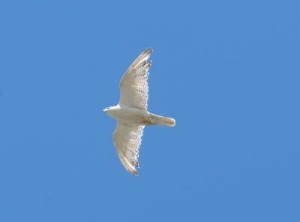
This is a Gyrfalcon — one of two species found to be highly vulnerable to future climate change impacts in Arctic Alaska.
Credit: Steve Zack/ WCS
Arctic Alaska provides some of the most important breeding and stopping grounds for millions of birds from around the world. The region is also warming much faster than the rest of the globe.
The report, Assessing Climate Change Vulnerability of Breeding Birds in Arctic Alaska, co-authored by WCS Scientists Joe Liebezeit, Erika Rowland, Molly Cross and Steve Zack, details in-depth vulnerability assessments conducted on 54 species to help guide wildlife management in the region. The project was aided by the participation of more than 80 scientists who are experts on the species. The authors note that the assessments looked exclusively at the impacts of climate change experienced by breeding birds in Arctic Alaska, and not in other parts of their range.
“The primary value of this assessment is to tease out the underlying factors that make species more or less vulnerable to climate change,” said WCS Conservation Scientist and report co-author Joe Liebezeit. “Through this effort we can begin to prioritize subsequent management actions and identify data gaps. The results represent a starting point to help prioritize management actions and conservation planning efforts.”
The vulnerabilities were assessed using software developed by NatureServe that combines expert opinion of the sensitivity of a species to climate change (including traits like physiological tolerance to temperature change) and geospatial datasets of external factors including projected temperature and moisture changes across northern Alaska.
As Coordinator of the Arctic Landscape Conservation Cooperative, Greg Balogh looks at climate-driven changes. “This assessment tool melds computer modeling with expert opinion in a way not often realized,” said Balogh. “The insights and graphic depictions of climate change winners and losers is a real eye-opener. Land and resource managers would do well to pay attention to products like this as they think about how they conduct business in the future.” Among the commonalities seen among the more vulnerable species was a strong orientation to the coastline exposing them to climate-related changes in coastal disturbances linked to storms, erosion and ice cover. Generalist species (those that can adapt to a wide variety of conditions) were less affected and, in some cases, predicted to thrive in a warming climate.
Despite the extensive assessment carried out, the authors acknowledge that there is more work to be done.
“Our results tell only part of the climate change story for these species,” said WCS Conservation Scientist and report co-author Erika Rowland. “For example, several species rely on wetland habitats, which may dry out or shift locations in response to warming. Also, many species winter in places outside of Alaska and so climate change information from other regions will ultimately need to be woven into our understanding of vulnerability in Arctic Alaska for conservation planning and management.”
George Divoky, an ornithologist and climate observer who monitors black guillemots breeding on Cooper Island off the coast of Barrow, Alaska, the northernmost point in the USA, has also been telling me how changes in the sea ice have been making life difficult for “his” birds this year. The ice has been breaking up massively and very early in the season.
“Having the ice be breaking up this early and to such an extent could mean that there will be open water north of Cooper Island much sooner than normal. If the ice is well offshore when guillemot eggs hatch in July, then parent birds will have a tough time finding food for young. In the short term it could also mean I will have problems getting out to the island by snow machine in early June.” There is more from George on the Friends of Cooper Island site.
More information on the current state of the Arctic ice, including fascinating videos on the NASA website.



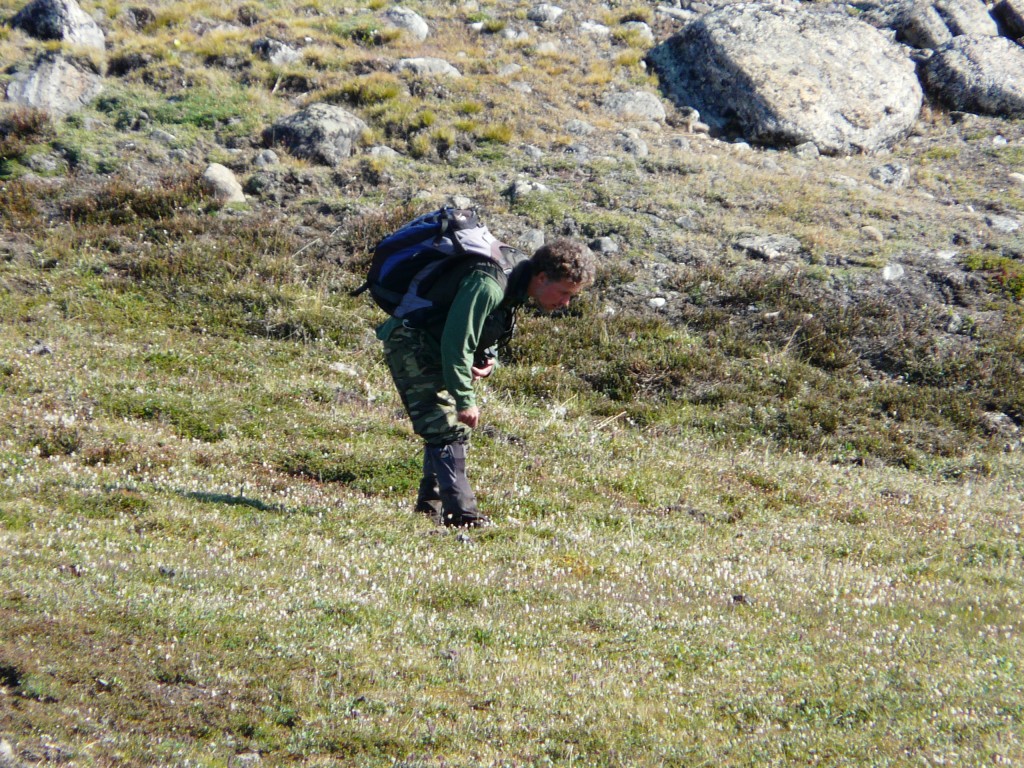
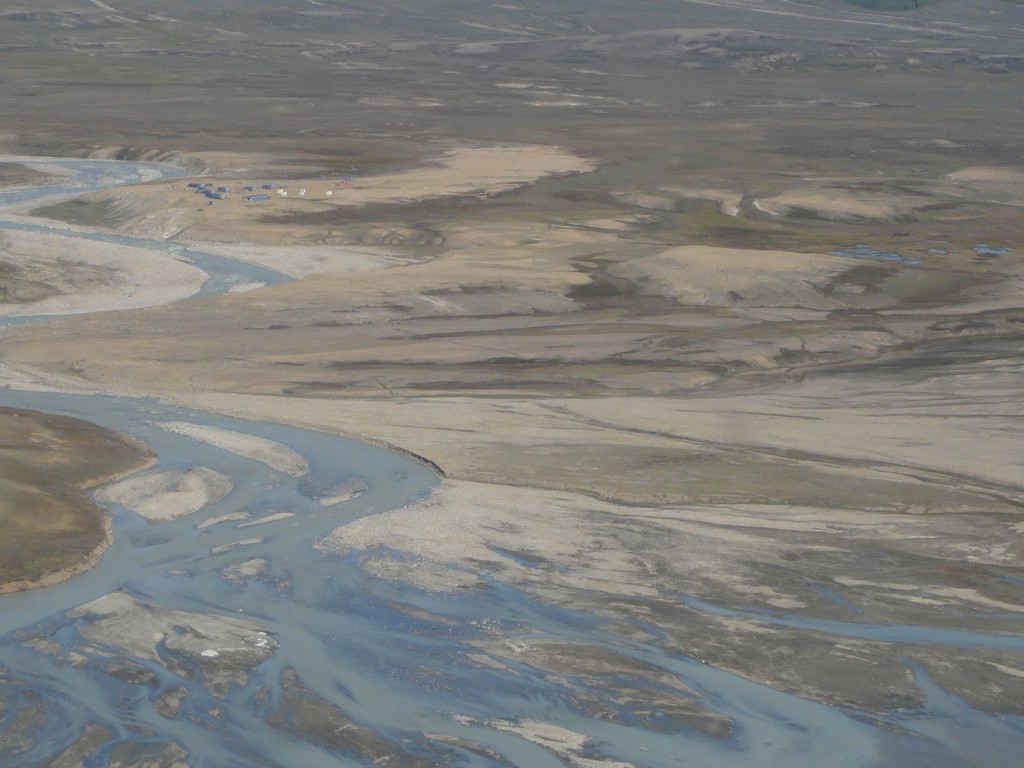

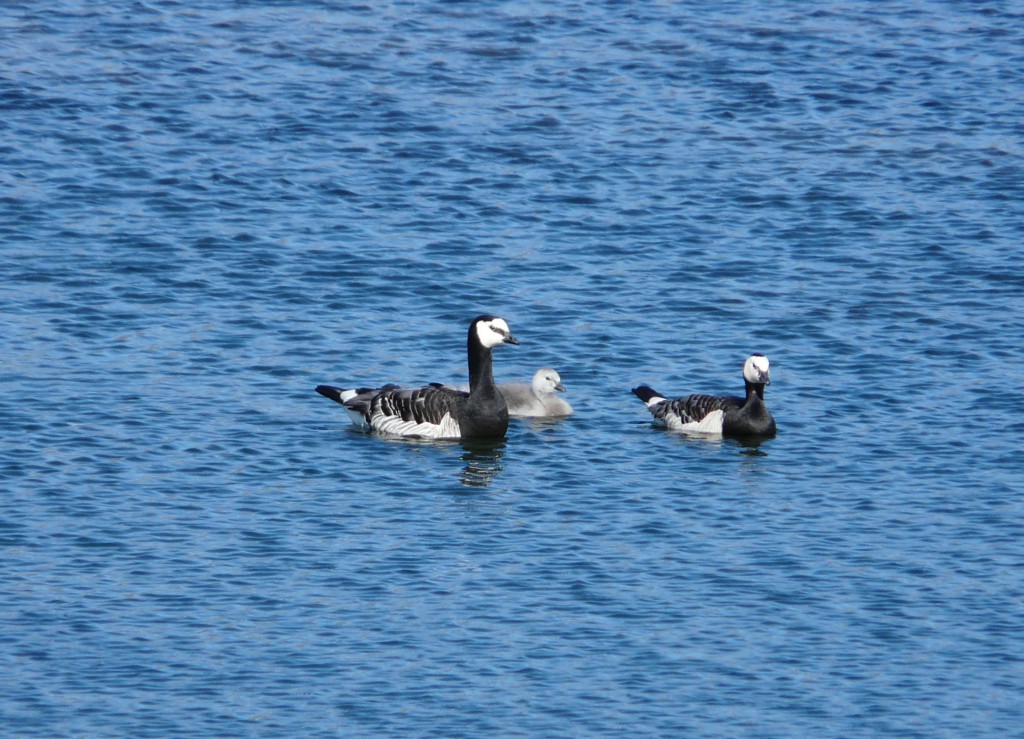

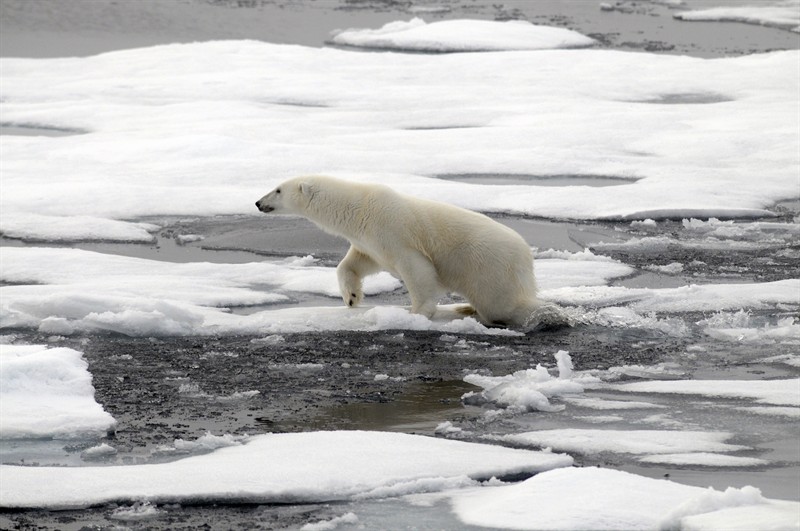
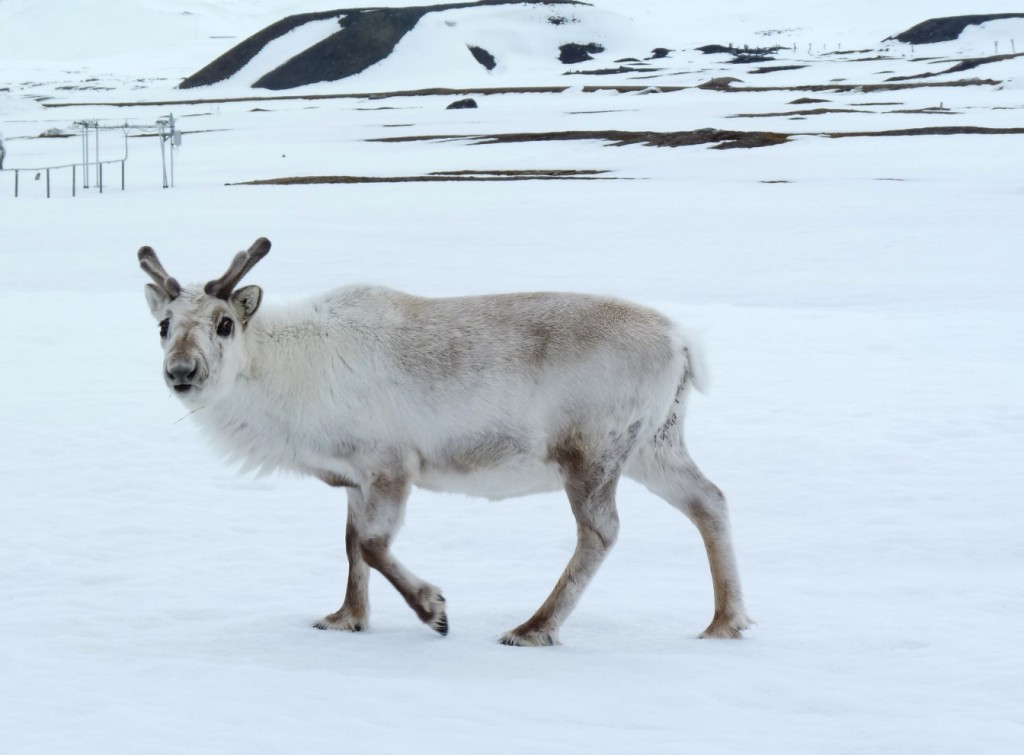


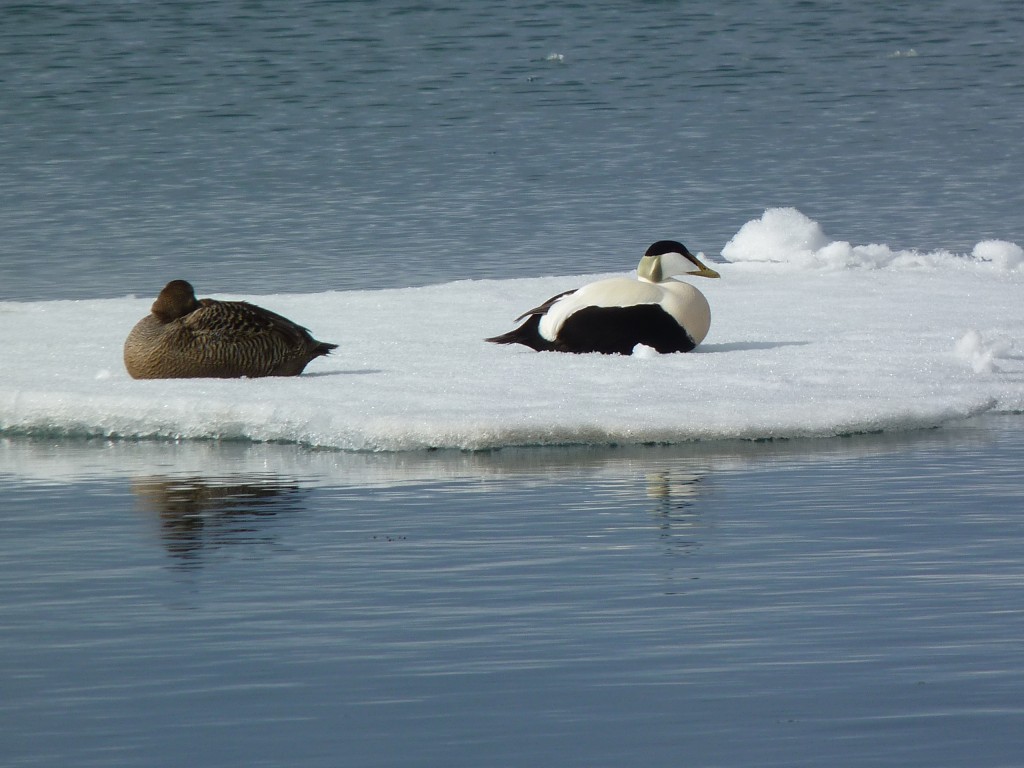
















Feedback